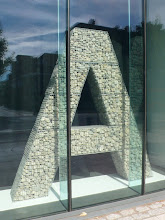61 Stoke Newington High Street
Helloumi, red peppers and spinach on toast, served with salad, and a fresh orange juice
The menu at Bodrum seems a bit of a cross cultural mix. There is a Turkish section at the back with the usual hot and cold mezzes, but at the front it starts with a range of fry up variations. I decide to go for something that seems a bit ‘Turklish’, as its got helloumi cheese in it, but it is served on sliced white toast.

Maybe this far down Stoke Newington High Street we are on the fringes of the concentration of Turkish cafés and restaurants, so perhaps it is hedging its bets and playing to a broader clientele. We sit outside facing the road, but at the moment it is quite quiet, and there isn’t a constant stream of passers by. Three children play on the steps of Professional Nails, two doors down. I am surprised to see they are open, I wouldn’t have thought there would be much demand for nail painting on a Sunday. A guy crosses over the road with a bag of spinach from Akdeniz Gida Pozari—I think that is probably for my breakfast. The other customers inside all seem to be English and most are having fry ups. An older couple, in their Sunday best, stand outside for a cigarette before they leave. Its quite a contrast to breakfast at Şömine.

Turklish: A mixed up cultural mezze
Alison James (1997) defines food creolisation as a form of cultural blending in which a mix of ingredients, styles and influences come together in a single meal. These blurred boundaries are easy to find once you start thinking about it. Chips and curry sauce and jacket potato with chilli con carne at one end of the spectrum, ‘fusion’ food at the other. Perhaps my favourite example comes from my time spent working at Nottingham Trent University. Most university catering departments provide a range of sandwiches so dull and tasteless that there is little to get excited about, but at Nottingham Trent, the lunch landscape shifted in the form of the onion bhaji sandwich. Granary bread, some tomato relish and a few lettuce leaves, along with sliced onion bhajis—it is a multi-cultural masterstroke, and one that sits nicely alongside my Bodrum Café breakfast.
Cook and Crang (1999) suggest that this process of hybridisation and re-localisation, spurred on by the multi-cultural culinary diversity available in places such as Hackney and the ‘circuitous geographies of flow and connection’ help construct a new contemporary Britishness. One that includes being able to pick up a frozen pack of doner kebab meat with chips and curry sauce, ‘just like from your local takeaway,’ from your local supermarket.
However, having said this, I’m not sure any food type could truly be said to be totally specific to one particular country. For example, as Sunanta (2005) points out although most people believe in an authentic Thai cuisine, it has actually been a product of transnational interactions for centuries. For example, in the 15th century, Khmer cooks introduced Indian food, such as curries; fish sauce, which is a crucial ingredient in almost every Thai dish, is a Chinese invention; 17th century contact with the West left a culinary legacy in Kanom Thong Yip, a Thai dessert modified from a French or Portuguese dish; and chillies were introduced by the Portuguese in the 16th century and in combination with fish sauce, galangal, and lime, they give a distinctive flavor to Thai dishes today.


No comments:
Post a Comment